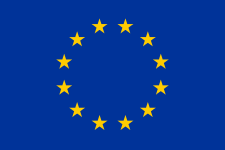The provisional tariffs applied since July 2024 to electric vehicles (EVs) imported from China, which may reach up to 35%, have sparked intense debate in Europe.
These, imposed by the European Union (EU) as a measure to counter alleged unfair competition backed by Chinese state subsidies, are designed to protect the local automotive industry.
However, the initial effects of this policy appear to have not produced significant changes in the market share of Asian brands in the European market.

“It looks the same as before, mainly due to the stocks the Chinese OEMs had in Europe,” states Wulf Schlachter, CEO of DXBe Management, to Mobility Portal Europe.
The data confirm it.
According to the latest MotoBarometr 2024 report from Exact x Forestall, Asian firms recorded a 26% increase in their sales in Europe during the first half of 2024 compared to the previous year.
The European Commission’s proposal to impose these tariffs has generated division within the EU, with countries such as Italy and France supporting the measure, while Germany and Sweden consider it counterproductive.
The Commission announced that these tariffs will be definitive once published in the EU Official Journal, consolidating a scenario of growing tension with China.
The Chinese Chamber of Commerce in the EU has already expressed its discontent with Brussels’ “protectionist” measures and has urged it to reconsider its stance.
The Asian country has responded with investigations into imported European products, such as pork and dairy.
This situation opens the debate on whether Europe is prepared to face a potential trade war with the Asian giant.
Several European manufacturers have voiced their disagreement with this policy.
Volkswagen, one of the largest car producers on the continent, described the measure as a “poor approach” that could weaken the competitiveness of the automotive industry in Europe.
The fear is that Brussels’ restrictive policies may trigger retaliation from China, affecting trade and industry on both sides.
Christian Lindner, the German Finance Minister, stated that it is crucial to seek a negotiated solution with Beijing to avoid a trade conflict that could impact the European economy.
How are Chinese brands adapting to the new European context?
Despite the challenges, Chinese brands appear unwilling to lose ground in Europe.
Xpeng and BYD, among other manufacturers, have begun to strengthen their presence on the continent by establishing production plants within European territory.
This would allow them to circumvent tariffs and compete more directly in the local market.
Lynk & Co, a Chinese-Swedish firm, has decided not to pass on the costs of the tariffs to European consumers, enabling it to remain competitive against local manufacturers.
This strategy aims to maintain its market share and continue expanding in the continent, leveraging local infrastructure and thus avoiding tariffs that affect imported units.
In this framework, the MotoBarometr 2024 reveals a concerning trend for EU carmakers: in several countries, a majority of industry experts believe that Chinese EV manufacturers will become market leaders by 2035.
In places such as Poland, Spain, and Hungary, more than half of the respondents project market dominance by Chinese brands, posing a significant challenge for the European industry.
Price competition remains one of the key factors driving preference for Chinese zero-emission cars in Europe.
The combination of advanced technology, competitive pricing, and, in some cases, quality comparable to European brands has led to increased demand for these vehicles among local consumers.
This landscape compels European manufacturers to redefine their strategies and advocate for policies that can level the playing field, especially in light of the scheduled end of internal combustion vehicle sales in Europe by 2035.
In this context, the question remains open as to how to support the growth of local eMobility while maintaining competitiveness against the influx of Chinese products.
It is clear that the current trade tensions are merely the beginning of a process that will redefine the landscape of electromobility in Europe.
Both government and industry actors will need to work together to respond to this challenge.








